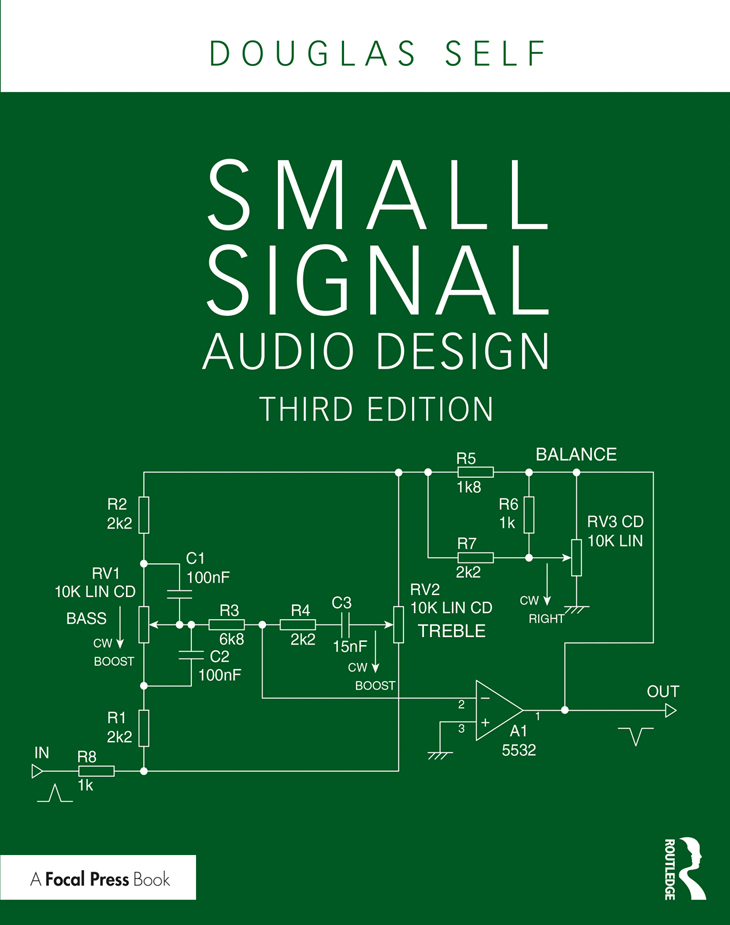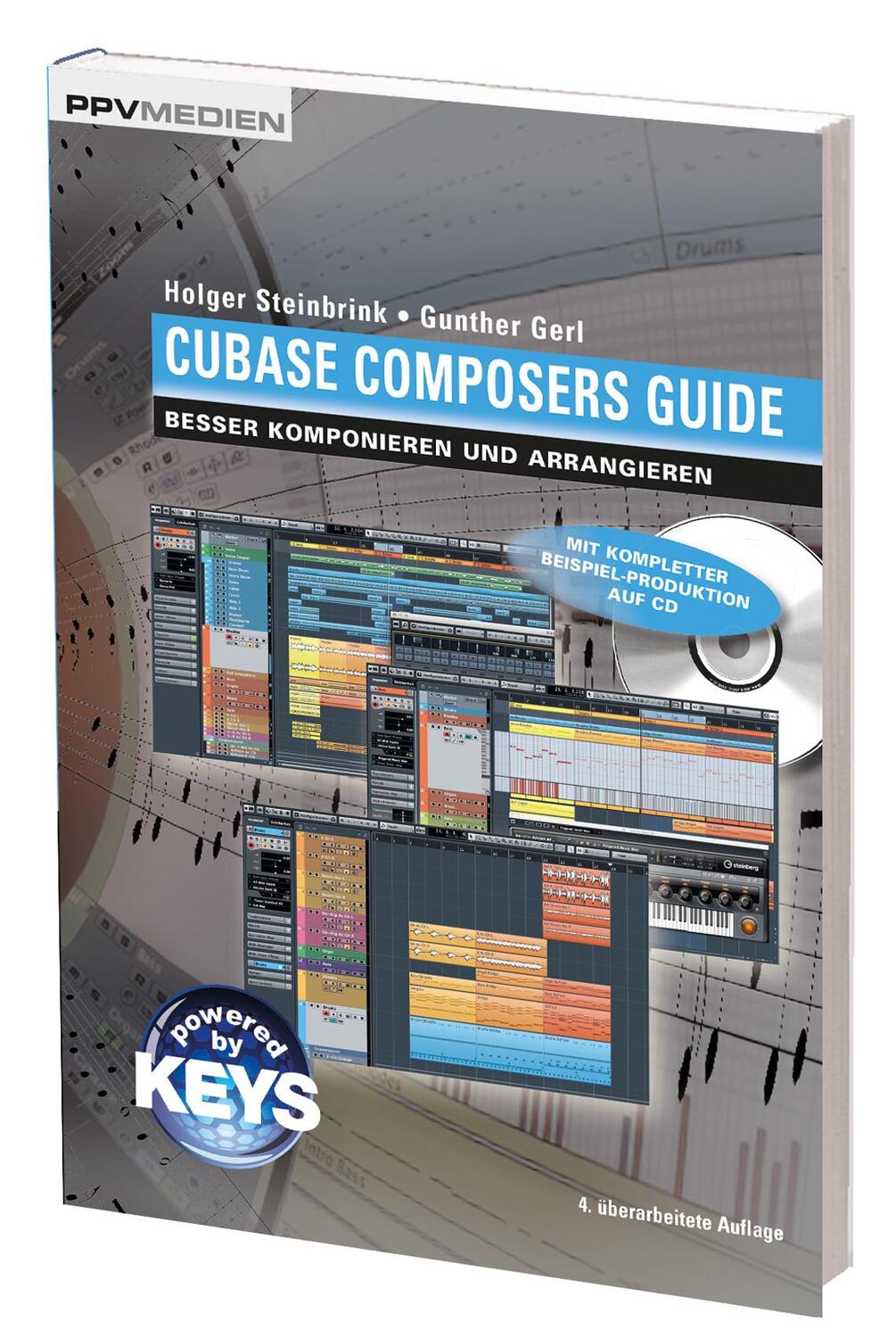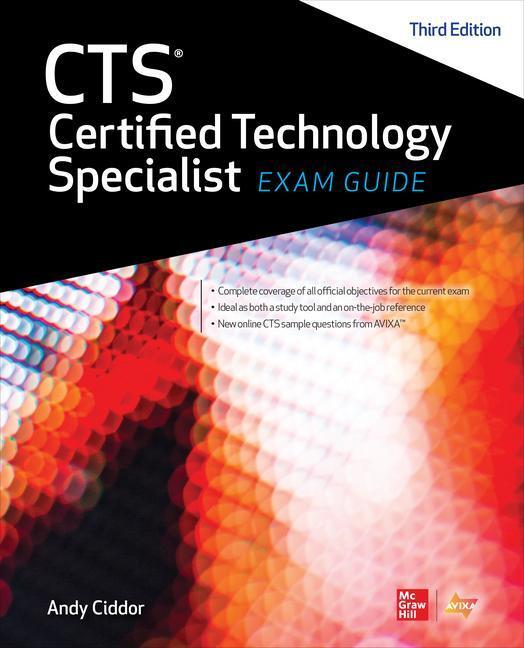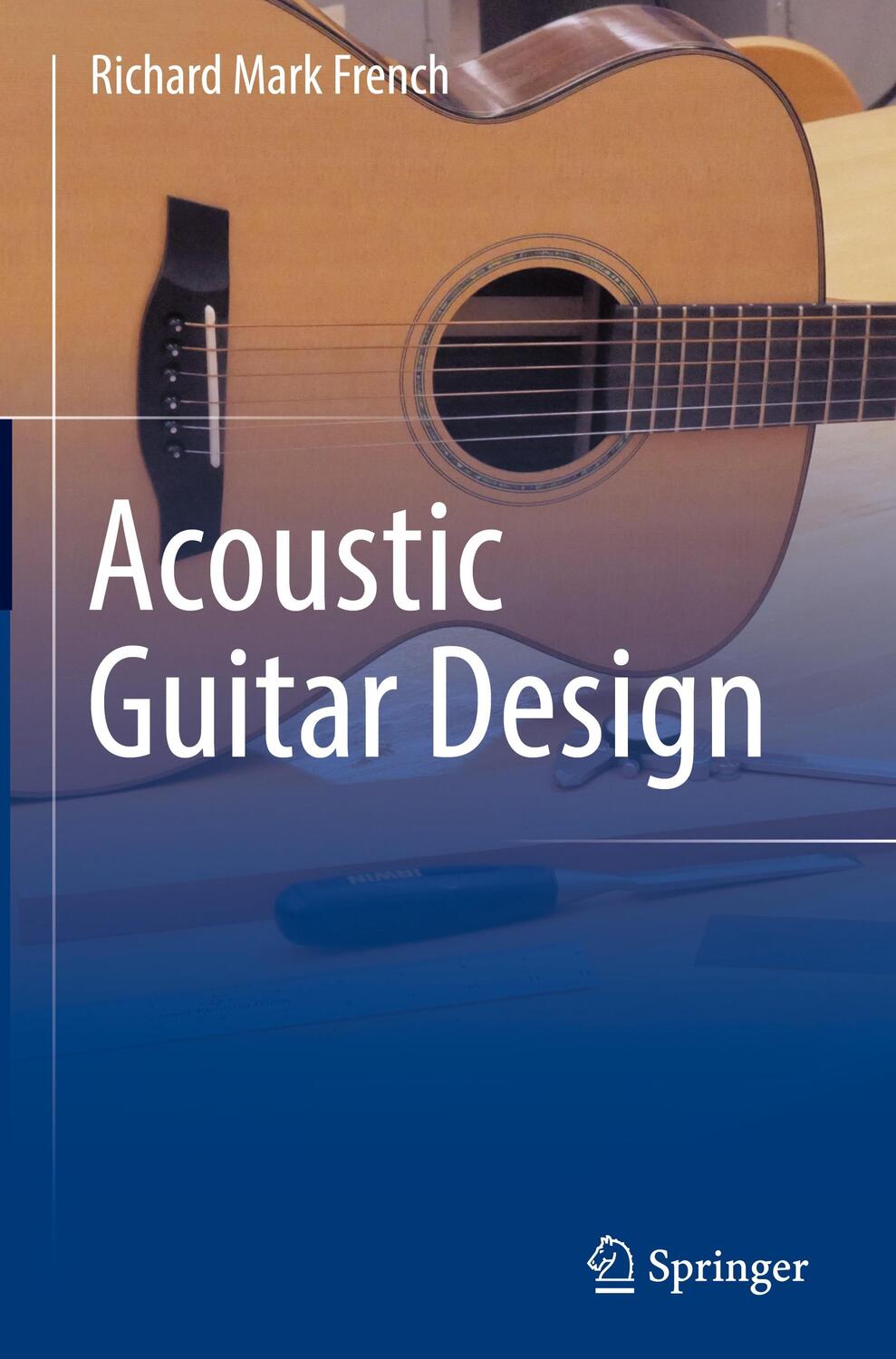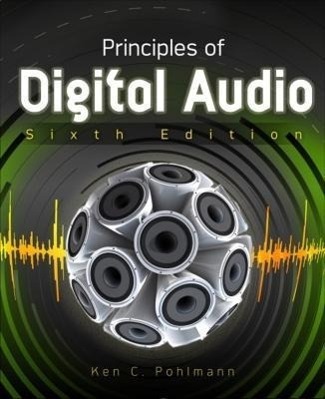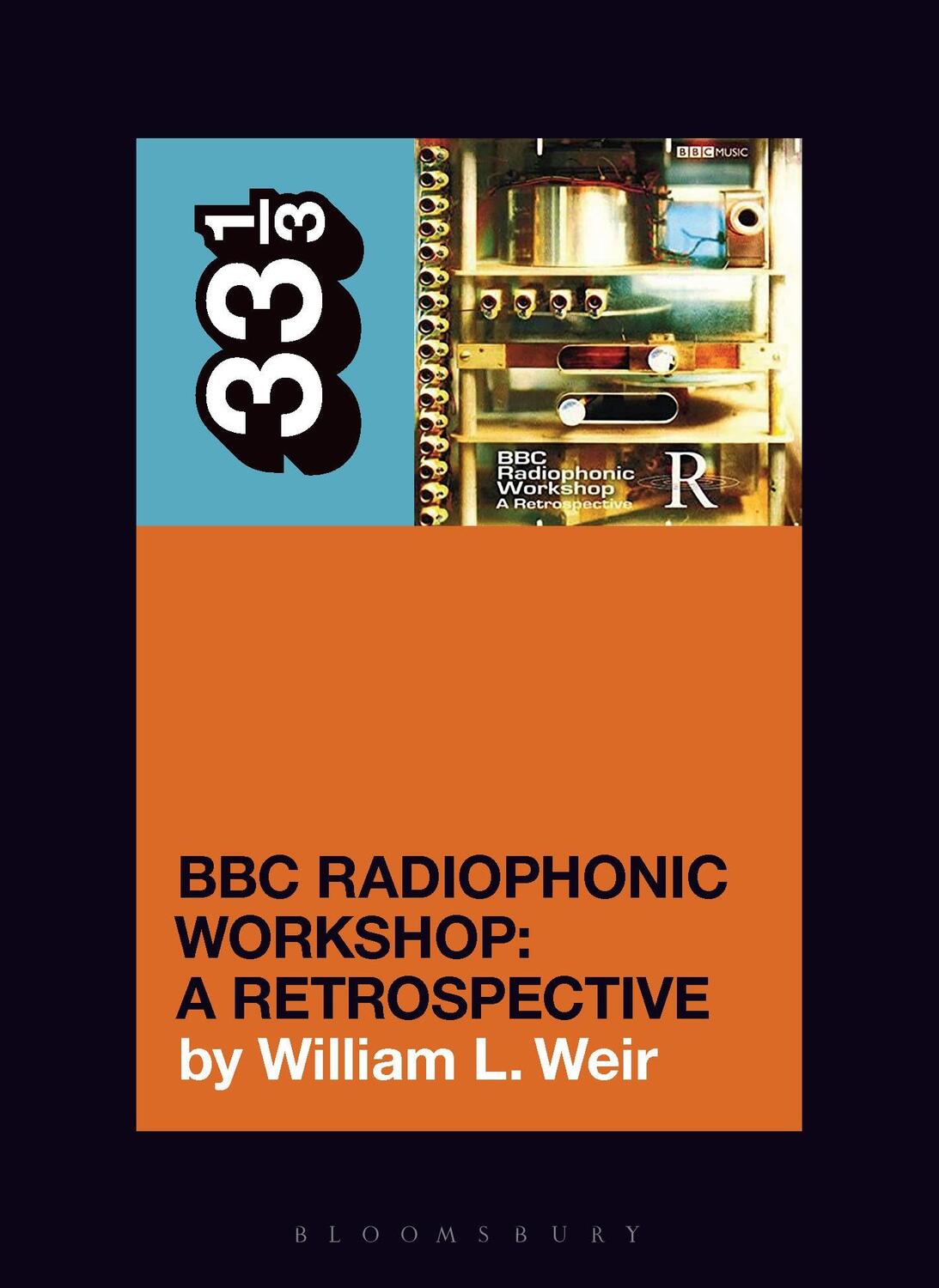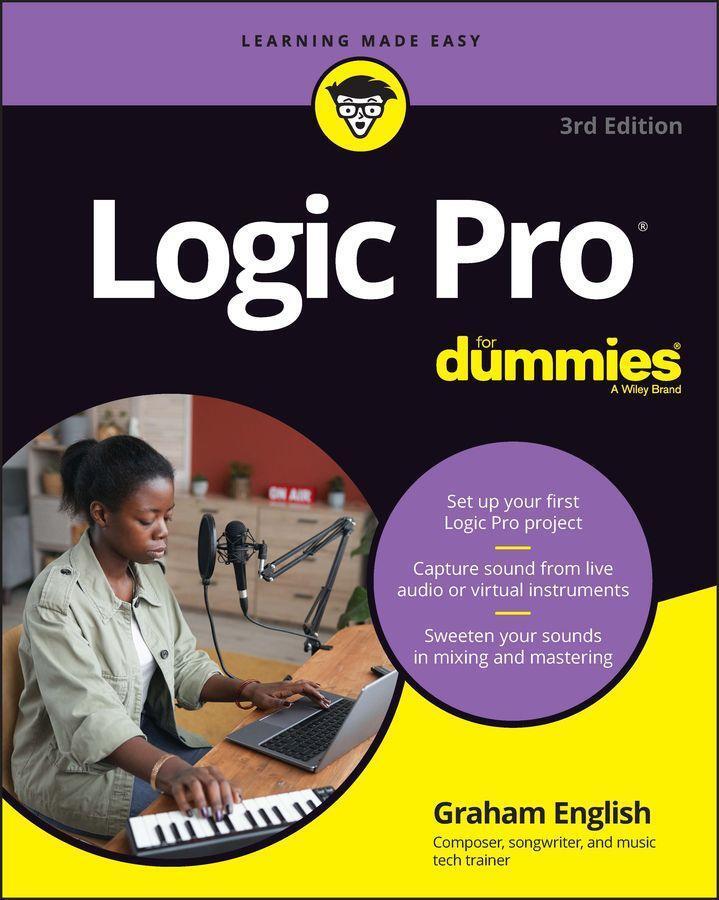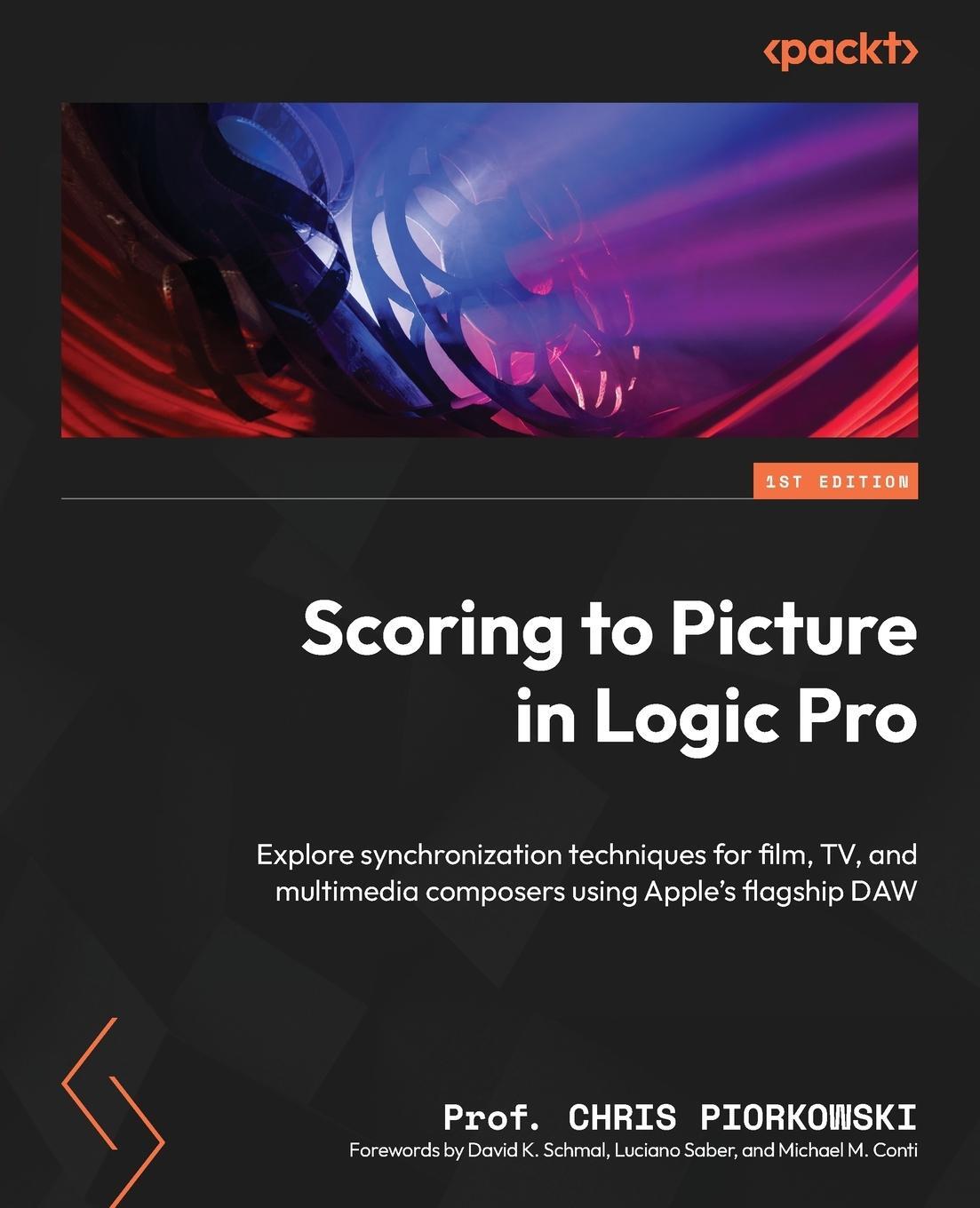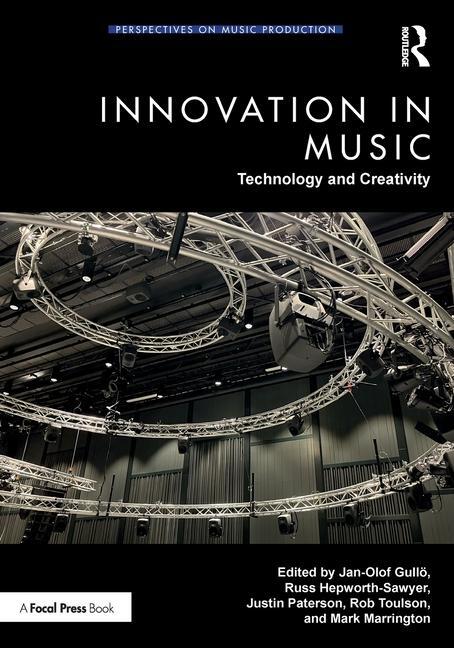94,40 €*
Versandkostenfrei per Post / DHL
Lieferzeit 4-7 Werktage
Small Signal Audio Design is a highly practical handbook providing an extensive repertoire of circuits that can be assembled to make almost any type of audio system. The publication of Electronics for Vinyl has freed up space for new material, (though this book still contains a lot on moving-magnet and moving-coil electronics) and this fully revised third edition offers wholly new chapters on tape machines, guitar electronics, and variable-gain amplifiers, plus much more. A major theme is the use of inexpensive and readily available parts to obtain state-of-the-art performance for noise, distortion, crosstalk, frequency response accuracy and other parameters. Virtually every page reveals nuggets of specialized knowledge not found anywhere else. For example, you can improve the offness of a fader simply by adding a resistor in the right place- if you know the right place.
Essential points of theory that bear on practical audio performance are lucidly and thoroughly explained, with the mathematics kept to an absolute minimum. Self's background in design for manufacture ensures he keeps a wary eye on the cost of things.
This book features the engaging prose style familiar to readers of his other books. You will learn why mercury-filled cables are not a good idea, the pitfalls of plating gold on copper, and what quotes from Star Trek have to do with PCB design.
Learn how to:
- make amplifiers with apparently impossibly low noise
- design discrete circuitry that can handle enormous signals with vanishingly low distortion
- use humble low-gain transistors to make an amplifier with an input impedance of more than 50 megohms
- transform the performance of low-cost-opamps
- build active filters with very low noise and distortion
- make incredibly accurate volume controls
- make a huge variety of audio equalisers
- make magnetic cartridge preamplifiers that have noise so low it is limited by basic physics, by using load synthesis
- sum, switch, clip, compress, and route audio signals
- be confident that phase perception is not an issue
This expanded and updated third edition contains extensive new material on optimising RIAA equalisation, electronics for ribbon microphones, summation of noise sources, defining system frequency response, loudness controls, and much more. Including all the crucial theory, but with minimal mathematics, Small Signal Audio Design is the must-have companion for anyone studying, researching, or working in audio engineering and audio electronics.
Small Signal Audio Design is a highly practical handbook providing an extensive repertoire of circuits that can be assembled to make almost any type of audio system. The publication of Electronics for Vinyl has freed up space for new material, (though this book still contains a lot on moving-magnet and moving-coil electronics) and this fully revised third edition offers wholly new chapters on tape machines, guitar electronics, and variable-gain amplifiers, plus much more. A major theme is the use of inexpensive and readily available parts to obtain state-of-the-art performance for noise, distortion, crosstalk, frequency response accuracy and other parameters. Virtually every page reveals nuggets of specialized knowledge not found anywhere else. For example, you can improve the offness of a fader simply by adding a resistor in the right place- if you know the right place.
Essential points of theory that bear on practical audio performance are lucidly and thoroughly explained, with the mathematics kept to an absolute minimum. Self's background in design for manufacture ensures he keeps a wary eye on the cost of things.
This book features the engaging prose style familiar to readers of his other books. You will learn why mercury-filled cables are not a good idea, the pitfalls of plating gold on copper, and what quotes from Star Trek have to do with PCB design.
Learn how to:
- make amplifiers with apparently impossibly low noise
- design discrete circuitry that can handle enormous signals with vanishingly low distortion
- use humble low-gain transistors to make an amplifier with an input impedance of more than 50 megohms
- transform the performance of low-cost-opamps
- build active filters with very low noise and distortion
- make incredibly accurate volume controls
- make a huge variety of audio equalisers
- make magnetic cartridge preamplifiers that have noise so low it is limited by basic physics, by using load synthesis
- sum, switch, clip, compress, and route audio signals
- be confident that phase perception is not an issue
This expanded and updated third edition contains extensive new material on optimising RIAA equalisation, electronics for ribbon microphones, summation of noise sources, defining system frequency response, loudness controls, and much more. Including all the crucial theory, but with minimal mathematics, Small Signal Audio Design is the must-have companion for anyone studying, researching, or working in audio engineering and audio electronics.
Signals
Amplifiers
Voltage amplifiers
Transconductance amplifiers
Current amplifiers
Transimpedance amplifiers
Negative feedback
Nominal signal levels and dynamic range
Frequency response
Frequency response: cascaded stages
Phase perception
Gain structures
Amplification then attenuation
Attenuation then amplification
Raising the input signal to the nominal level
Active-gain-controls
Noise
Johnson noise
Shot noise
1/f noise (flicker noise)
Popcorn noise
Summing noise sources
Noise in amplifiers
Noise in bipolar transistors
Bipolar transistor voltage noise
Bipolar transistor current voltage
Noise in JFETs
Noise in opamps
Noise gain
Low-noise opamp circuitry
Noise measurements
How to attenuate quietly
How to amplify quietly
How to invert quietly
How to balance quietly
Ultra low-noise design with multipath amplifiers
Ultra low-noise voltage buffers
Ultra low-noise amplifiers
Multiple amplifiers for greater drive capability
Chapter 2: Components
Conductors
Copper and other conductive elements
The metallurgy of copper
Gold and its uses
Cable and wiring resistance
PCB track resistance
PCB track-to-track crosstalk
The 3-layer PCB
Impedances and crosstalk: a case history
Resistors
Through-hole resistors
Surface-mount resistors
Resistor series
Resistor accuracy: two resistor combinations
Resistor accuracy: three resistor combinations
Other resistor combinations
Resistor value distributions
The uniform distribution
Resistor imperfections
Resistor excess noise
Resistor non-linearity
Capacitors
Capacitor series
Capacitor non-linearity examined
Non-electrolytic capacitor non-linearity
Electrolytic capacitor non-linearity
Inductors
Chapter 3: Discrete transistor circuitry
Why use discrete transistor circuitry?
Bipolars and FETs
Bipolar junction transistors
The transistor equation
Beta
Unity-gain buffer stages
The simple emitter-follower
The constant-current emitter-follower
The push-pull emitter-follower
Emitter-follower stability
CFP emitter-followers
Improved unity-gain buffers
Gain stages
One-transistor shunt-feedback gain stages
One-transistor series-feedback gain stages
Two-transistor shunt-feedback gain stages
Two-transistor shunt-feedback stages: improving linearity
Two-transistor shunt-feedback stages: noise
Two-transistor shunt-feedback stages: bootstrapping
Two-transistor shunt-feedback stages as summing amplifiers
Two-transistor series-feedback gain stages
Discrete opamp design
Discrete opamp design: the input stage
Discrete opamp design: the second stage
Discrete opamp design: the output stage
High input impedance bipolar stages
Chapter 4: Opamps and their properties
Introduction
A Very Brief History of Opamps.
Opamp properties: noise
Opamp properties: slew rate
Opamp properties: common mode range
Opamp properties: input offset voltage
Opamp properties: bias current
Opamp properties: cost
Opamp properties: distortion
Opamp internal distortion
Slew-rate limiting distortion
Distortion due to loading
Thermal distortion
Common-mode distortion
Common-mode distortion: Bipolar input opamps
Common-mode distortion: JFET opamps
Selecting The Right Opamp
Opamps surveyed: BJT input types
The LM741 opamp
The NE5532/5534 opamp
Deconstructing the 5532
The LM4562 opamp
The AD797 opamp
The OP27 opamp
The OP270 opamp
The OP275 opamp
Opamps surveyed: JFET input types
The TL072 opamp
The TL052 opamp
The OPA2134 opamp
The OPA604 opamp
The OPA627 opamp
Chapter 5: Opamps for low voltages
High Fidelity from Low Voltages
Running opamps from a single +5V supply rail
Opamps for 5V operation
The NE5532 in +5V operation
The LM4562 in +5V operation
The AD8022 in +5V operation
The AD8397 in +5V operation
Opamps for 3.3 V operation
Chapter 6: Filters
Introduction
Passive filters
Active filters
Low pass filters
High pass filters
Combined low pass & high pass filters
Bandpass filters
Notch filters
All-pass filters
Filter characteristics
Sallen & Key lowpass filters
Sallen & Key highpass filters
Distortion in Sallen & Key filters
Multiple-feedback bandpass filters
Notch filters
Differential Filters
Chapter 7: Preamplifier architectures
Passive preamplifiers
Active preamplifiers
Amplification and the gain-distribution problem
Active gain controls plus passive attenuators
Recording facilities
Tone controls
Chapter 8: Variable gain stages
Amplifier stages with gain from unity upwards: single gain pot
Amplifier stages with gain from unity upwards: dual gain pot
Combining gain stages with active filters
Amplifier stages with gain from zero upwards: single gain pot
Amplifier stages with gain from zero upwards: dual gain pot
Switched-gain amplifiers
Chapter 9: Moving-magnet inputs: levels & RIAA equalisation
Cartridge types
The vinyl medium
Spurious signals
Other vinyl problems
Maximum signal levels from vinyl
Moving-Magnet cartridge sensitivities
Overload margins and amplifier limitations
Equalisation and its discontents
The unloved IEC Amendment
The 'Neumann pole'
MM amplifier configurations
Opamp MM input stages
Calculating the RIAA equalisation components
Implementing RIAA equalisation
Implementing the IEC amendment
RIAA series-feedback network configurations
RIAA optimisation: C1 as a single E6 capacitor, 2xE24
RIAA optimisation: C1 as 3x10nF capacitors, 2xE24
RIAA optimisation: C1 as 4x10nF capacitors, 2xE24
RIAA optimisation: the Willmann Tables
RIAA optimisation: C1 as 3x10nF capacitors, 3xE24
RIAA optimisation: C1 as 4x10nF capacitors, 3xE24
Switched-gain MM RIAA amplifiers
Switched-gain MM/MC RIAA amplifiers
Open-loop gain and RIAA accuracy
Passive and semi- passive RIAA equalisation
MM cartridge loading & frequency response
MM cartridge-preamplifier interaction
MM cartridge DC and AC coupling
Noise in MM RIAA preamplifiers
Hybrid MM amplifiers
Balanced MM inputs
Noise in balanced MM inputs
Noise weighting
Noise measurements
Cartridge load synthesis for lower noise
Subsonic filters
Subsonic filtering: Butterworth filters
Subsonic filtering: elliptical filters
Subsonic filtering by cancellation
Ultrasonic filters
A practical MM amplifier: #3
Chapter 10: Moving-coil head amplifiers
Moving-coil cartridge characteristics
The limits on MC noise performance
Amplification strategies
Moving-coil transformers
Moving-coil input amplifiers
An effective MC amplifier configuration
The complete circuit
Performance
Chapter 11: Tape replay
The Return of Tape
A brief history of tape recording
The basics of tape recording
Multitrack recording
Tape heads
Tape replay
Tape replay equalisation
Tape replay amplifiers
Replay noise: calculation
Replay noise: measurements
Load synthesis
Noise reduction systems
Dolby HX-Pro
Chapter 12: Guitar preamplifiers
Electric guitar technology
Guitar pickups
Pickup characteristics
Guitar wiring
Guitar leads
Guitar preamplifiers
Guitar preamplifier noise: calculations
Guitar preamplifier noise: measurements
Guitar amplifiers and guitar effects
Guitar direct injection
Chapter 13: Volume controls
Volume controls
Volume control laws
Loaded linear pots
Dual-action volume controls
Tapped volume controls
Slide faders
Active Volume controls
The Baxandall active volume control
The Baxandall volume control law
A practical Baxandall active volume stage
Low-noise Baxandall active volume stages
The Baxandall volume control: loading effects
An improved Baxandall active volume stage with lower noise
Baxandall active volume stage plus passive control
The Overlap Penalty
Potentiometers and DC
Belt-ganged volume controls
Motorised potentiometers
Stepped volume controls
Switched attenuator volume controls
Relay-switched volume controls
Transformer-tap volume controls
Integrated circuit volume controls
Loudness controls
The Newcomb and Young loudness control
Chapter 14: Balance controls
The ideal balance law
Balance controls: passive
Balance controls: active
Combining balance controls with other stages
Switched balance controls
Mono-stereo switches
Width controls
Chapter 15: Tone controls & equalisers
Introduction
Passive tone controls
Baxandall Tone Controls
The Baxandall one-LF-capacitor Tone Control
The Baxandall two-LF-capacitor Tone Control
The Baxandall two-HF-capacitor tone control
The Baxandall tone control: impedance and noise
Combining a Baxandall stage with an active balance...
| Medium: | Taschenbuch |
|---|---|
| Seiten: | 784 |
| ISBN-13: | 9780367468958 |
| ISBN-10: | 0367468956 |
| Sprache: | Englisch |
| Autor: | Self, Douglas |
| Auflage: | 3. Aufl. |
| Hersteller: |
Focal Press
Taylor & Francis |
| Abbildungen: | 644 SW-Abb., 523 SW-Zeichn., 121 Tabellen |
| Maße: | 35 x 191 x 235 mm |
| Von/Mit: | Douglas Self |
| Erscheinungsdatum: | 22.04.2020 |
| Gewicht: | 1,791 kg |
Signals
Amplifiers
Voltage amplifiers
Transconductance amplifiers
Current amplifiers
Transimpedance amplifiers
Negative feedback
Nominal signal levels and dynamic range
Frequency response
Frequency response: cascaded stages
Phase perception
Gain structures
Amplification then attenuation
Attenuation then amplification
Raising the input signal to the nominal level
Active-gain-controls
Noise
Johnson noise
Shot noise
1/f noise (flicker noise)
Popcorn noise
Summing noise sources
Noise in amplifiers
Noise in bipolar transistors
Bipolar transistor voltage noise
Bipolar transistor current voltage
Noise in JFETs
Noise in opamps
Noise gain
Low-noise opamp circuitry
Noise measurements
How to attenuate quietly
How to amplify quietly
How to invert quietly
How to balance quietly
Ultra low-noise design with multipath amplifiers
Ultra low-noise voltage buffers
Ultra low-noise amplifiers
Multiple amplifiers for greater drive capability
Chapter 2: Components
Conductors
Copper and other conductive elements
The metallurgy of copper
Gold and its uses
Cable and wiring resistance
PCB track resistance
PCB track-to-track crosstalk
The 3-layer PCB
Impedances and crosstalk: a case history
Resistors
Through-hole resistors
Surface-mount resistors
Resistor series
Resistor accuracy: two resistor combinations
Resistor accuracy: three resistor combinations
Other resistor combinations
Resistor value distributions
The uniform distribution
Resistor imperfections
Resistor excess noise
Resistor non-linearity
Capacitors
Capacitor series
Capacitor non-linearity examined
Non-electrolytic capacitor non-linearity
Electrolytic capacitor non-linearity
Inductors
Chapter 3: Discrete transistor circuitry
Why use discrete transistor circuitry?
Bipolars and FETs
Bipolar junction transistors
The transistor equation
Beta
Unity-gain buffer stages
The simple emitter-follower
The constant-current emitter-follower
The push-pull emitter-follower
Emitter-follower stability
CFP emitter-followers
Improved unity-gain buffers
Gain stages
One-transistor shunt-feedback gain stages
One-transistor series-feedback gain stages
Two-transistor shunt-feedback gain stages
Two-transistor shunt-feedback stages: improving linearity
Two-transistor shunt-feedback stages: noise
Two-transistor shunt-feedback stages: bootstrapping
Two-transistor shunt-feedback stages as summing amplifiers
Two-transistor series-feedback gain stages
Discrete opamp design
Discrete opamp design: the input stage
Discrete opamp design: the second stage
Discrete opamp design: the output stage
High input impedance bipolar stages
Chapter 4: Opamps and their properties
Introduction
A Very Brief History of Opamps.
Opamp properties: noise
Opamp properties: slew rate
Opamp properties: common mode range
Opamp properties: input offset voltage
Opamp properties: bias current
Opamp properties: cost
Opamp properties: distortion
Opamp internal distortion
Slew-rate limiting distortion
Distortion due to loading
Thermal distortion
Common-mode distortion
Common-mode distortion: Bipolar input opamps
Common-mode distortion: JFET opamps
Selecting The Right Opamp
Opamps surveyed: BJT input types
The LM741 opamp
The NE5532/5534 opamp
Deconstructing the 5532
The LM4562 opamp
The AD797 opamp
The OP27 opamp
The OP270 opamp
The OP275 opamp
Opamps surveyed: JFET input types
The TL072 opamp
The TL052 opamp
The OPA2134 opamp
The OPA604 opamp
The OPA627 opamp
Chapter 5: Opamps for low voltages
High Fidelity from Low Voltages
Running opamps from a single +5V supply rail
Opamps for 5V operation
The NE5532 in +5V operation
The LM4562 in +5V operation
The AD8022 in +5V operation
The AD8397 in +5V operation
Opamps for 3.3 V operation
Chapter 6: Filters
Introduction
Passive filters
Active filters
Low pass filters
High pass filters
Combined low pass & high pass filters
Bandpass filters
Notch filters
All-pass filters
Filter characteristics
Sallen & Key lowpass filters
Sallen & Key highpass filters
Distortion in Sallen & Key filters
Multiple-feedback bandpass filters
Notch filters
Differential Filters
Chapter 7: Preamplifier architectures
Passive preamplifiers
Active preamplifiers
Amplification and the gain-distribution problem
Active gain controls plus passive attenuators
Recording facilities
Tone controls
Chapter 8: Variable gain stages
Amplifier stages with gain from unity upwards: single gain pot
Amplifier stages with gain from unity upwards: dual gain pot
Combining gain stages with active filters
Amplifier stages with gain from zero upwards: single gain pot
Amplifier stages with gain from zero upwards: dual gain pot
Switched-gain amplifiers
Chapter 9: Moving-magnet inputs: levels & RIAA equalisation
Cartridge types
The vinyl medium
Spurious signals
Other vinyl problems
Maximum signal levels from vinyl
Moving-Magnet cartridge sensitivities
Overload margins and amplifier limitations
Equalisation and its discontents
The unloved IEC Amendment
The 'Neumann pole'
MM amplifier configurations
Opamp MM input stages
Calculating the RIAA equalisation components
Implementing RIAA equalisation
Implementing the IEC amendment
RIAA series-feedback network configurations
RIAA optimisation: C1 as a single E6 capacitor, 2xE24
RIAA optimisation: C1 as 3x10nF capacitors, 2xE24
RIAA optimisation: C1 as 4x10nF capacitors, 2xE24
RIAA optimisation: the Willmann Tables
RIAA optimisation: C1 as 3x10nF capacitors, 3xE24
RIAA optimisation: C1 as 4x10nF capacitors, 3xE24
Switched-gain MM RIAA amplifiers
Switched-gain MM/MC RIAA amplifiers
Open-loop gain and RIAA accuracy
Passive and semi- passive RIAA equalisation
MM cartridge loading & frequency response
MM cartridge-preamplifier interaction
MM cartridge DC and AC coupling
Noise in MM RIAA preamplifiers
Hybrid MM amplifiers
Balanced MM inputs
Noise in balanced MM inputs
Noise weighting
Noise measurements
Cartridge load synthesis for lower noise
Subsonic filters
Subsonic filtering: Butterworth filters
Subsonic filtering: elliptical filters
Subsonic filtering by cancellation
Ultrasonic filters
A practical MM amplifier: #3
Chapter 10: Moving-coil head amplifiers
Moving-coil cartridge characteristics
The limits on MC noise performance
Amplification strategies
Moving-coil transformers
Moving-coil input amplifiers
An effective MC amplifier configuration
The complete circuit
Performance
Chapter 11: Tape replay
The Return of Tape
A brief history of tape recording
The basics of tape recording
Multitrack recording
Tape heads
Tape replay
Tape replay equalisation
Tape replay amplifiers
Replay noise: calculation
Replay noise: measurements
Load synthesis
Noise reduction systems
Dolby HX-Pro
Chapter 12: Guitar preamplifiers
Electric guitar technology
Guitar pickups
Pickup characteristics
Guitar wiring
Guitar leads
Guitar preamplifiers
Guitar preamplifier noise: calculations
Guitar preamplifier noise: measurements
Guitar amplifiers and guitar effects
Guitar direct injection
Chapter 13: Volume controls
Volume controls
Volume control laws
Loaded linear pots
Dual-action volume controls
Tapped volume controls
Slide faders
Active Volume controls
The Baxandall active volume control
The Baxandall volume control law
A practical Baxandall active volume stage
Low-noise Baxandall active volume stages
The Baxandall volume control: loading effects
An improved Baxandall active volume stage with lower noise
Baxandall active volume stage plus passive control
The Overlap Penalty
Potentiometers and DC
Belt-ganged volume controls
Motorised potentiometers
Stepped volume controls
Switched attenuator volume controls
Relay-switched volume controls
Transformer-tap volume controls
Integrated circuit volume controls
Loudness controls
The Newcomb and Young loudness control
Chapter 14: Balance controls
The ideal balance law
Balance controls: passive
Balance controls: active
Combining balance controls with other stages
Switched balance controls
Mono-stereo switches
Width controls
Chapter 15: Tone controls & equalisers
Introduction
Passive tone controls
Baxandall Tone Controls
The Baxandall one-LF-capacitor Tone Control
The Baxandall two-LF-capacitor Tone Control
The Baxandall two-HF-capacitor tone control
The Baxandall tone control: impedance and noise
Combining a Baxandall stage with an active balance...
| Medium: | Taschenbuch |
|---|---|
| Seiten: | 784 |
| ISBN-13: | 9780367468958 |
| ISBN-10: | 0367468956 |
| Sprache: | Englisch |
| Autor: | Self, Douglas |
| Auflage: | 3. Aufl. |
| Hersteller: |
Focal Press
Taylor & Francis |
| Abbildungen: | 644 SW-Abb., 523 SW-Zeichn., 121 Tabellen |
| Maße: | 35 x 191 x 235 mm |
| Von/Mit: | Douglas Self |
| Erscheinungsdatum: | 22.04.2020 |
| Gewicht: | 1,791 kg |

